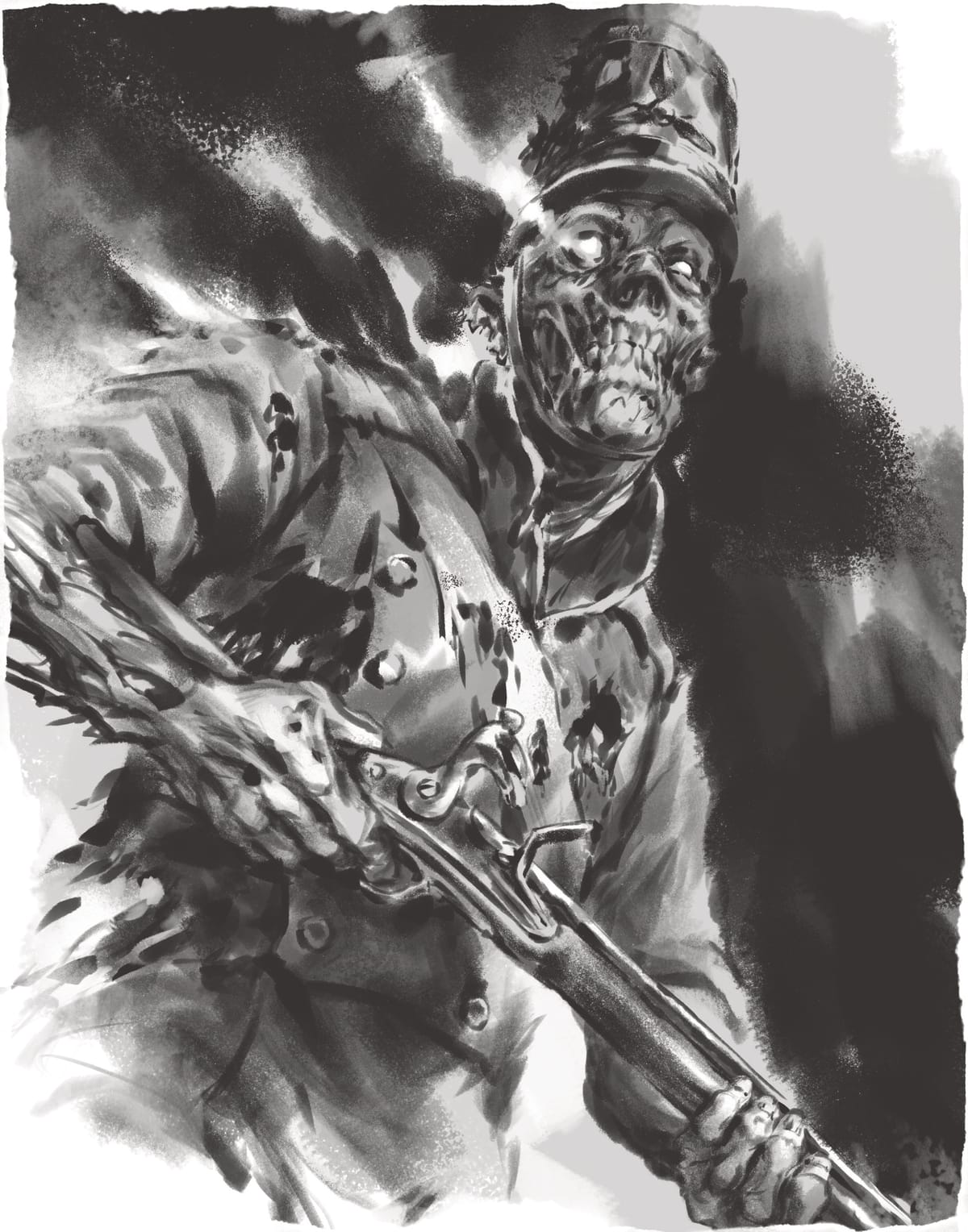
The battlefield is more often a place of horror than one of honour and that is especially so in The Silver Bayonet, the new wargame from one of the scene’s most acclaimed designers, Joseph McCullough.
Fusing together Napoleonic-era black powder skirmishes with the gothic and supernatural, The Silver Bayonet presents a Europe at war, on both physical and spiritual fronts. Whilst the era's great powers vie for supremacy across the continent, the bloodshed of their great games has attracted the attention of the Harvestmen, demonic forces that feed off the pain and suffering and who in turn are unleashing occult horrors onto the battlefields.
To combat this new threat each of the major European powers have created their own occult focused special forces, and that is where the game kicks in as each player must assemble a small unit tasked with scouring the battlefields of Europe to secure esoteric knowledge and weapons that might be used against both the supernatural and, of course, their rival nations.
Played with only around 8 models aside The Silver Bayonet is a fast paced skirmish game, and one that’s both easy to get into and quick to play. In fact the most involved, if still entertaining, part of the game is the initial creation of your squad. Once you’ve created your commanding officer each nation has access to a range of troops from the more familiar, such as grenadiers and guards, through to occult specialists and even werebears in the case of Imperial Russia. Each individual soldier (or bear) can then be further kitted out with various specialist weapons, all the better for handling some of the more unusual enemies they may find themselves up against.
With his much acclaimed titles, like Frostgrave and Rangers of Shadow Deep, McCullough was responsible for pushing narrative play back to the forefront of wargaming and The Silver Bayonet continues that tradition with scenarios that lean into telling dramatic stories, a solid campaign system and rules for solo and co-operative play.
Rather than all out assaults the scenarios included here see rival units tasked with investigating ruined monasteries, trying to relieve trolls of their treasure or hunting down changelings. Ah yes, the monsters, nothing quite upsets a well laid out battle-plan like suddenly finding yourself surrounded by a group of murderous, animated scarecrows or at the business end of a vampire’s bite. Sharpe may have had to put up with his fair share of nonsense from both the French and his own commanding officers, but as far a I can recall he never had to put down a werewolf.
Whilst many of the scenarios feature specific monsters, they’re just as likely to be attracted to the scene by the bloodshed and a bad dice roll or two, and one of The Silver Bayonet’s best features is how these rampaging horrors are incorporated into the game. Whilst the monstrous interlopers actions are, on the whole, automated each player also has a limited pool of ‘monster dice’ with which to modify their behaviour, change their targets and potentially throw a blood drenched spanner in their opponent’s works.
The resulting chaos keeps both players on their toes and makes for some great action on the table as cold iron and silver shot desperately ring out and your troops begin to collect their fair share of scars and stories to, hopefully, carry through to the next game.
Intrigued, we cornered McCullough and, holy symbol in hand, compelled him to answer our questions about the game...
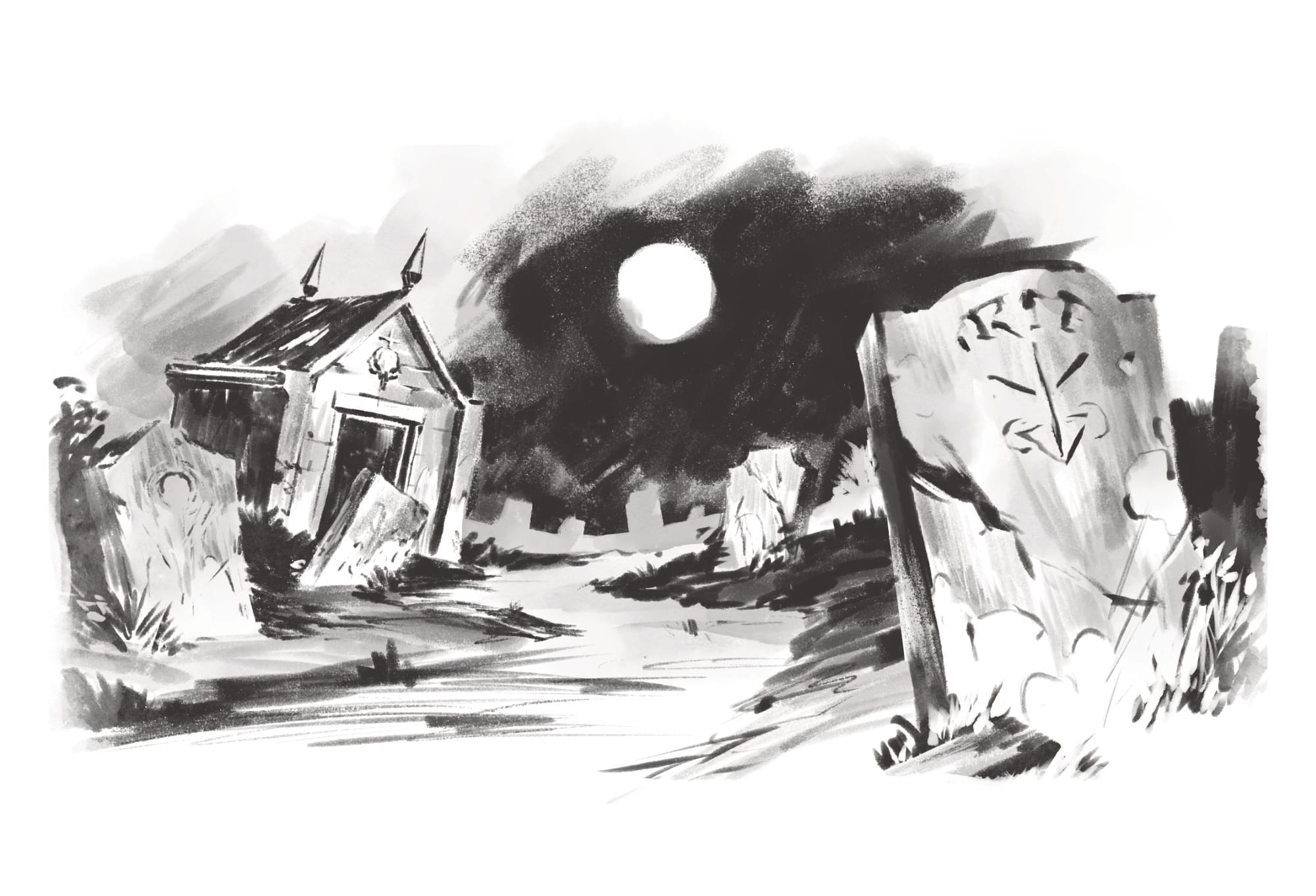
Wyrd Science: You've made acclaimed fantasy and science fiction wargames, so horror seems like a logical next step, but why Napoleonic horror?
Joseph McCullough: The uniforms! I’ve always been attracted to the colour, flair, and variety of Napoleonic uniforms.
Of course, this was only intensified by working for Osprey and having all those books of gorgeous artwork of those uniforms around me all the time. I wanted an excuse to paint some miniatures of those soldiers without committing to big armies. The period just works great for gothic horror. Because most firearms are still single shot, soldiers have limited firepower and often it comes down to hand-to-hand combat.
Also, it’s a time of chaos and a time when there are still a lot of shadowy corners, even in Europe, where monsters could hide.
WS: I've generally thought of historical and fantasy wargamers as operating in two quite distinct camps, have you had much feedback from people who have used The Silver Bayonet as a way of dipping their toes in the other world?
JM: I think that used to be true and there are still large groups that are only interested in one or the other, but I think increasingly, gamers are just after cool games and enjoy the variety of hopping around genres.
Part of the reason for making the game was to give people a ‘comfortable’ gateway from one to the other. From what I have heard, there are probably more people who have followed me from fantasy and are painting a few historicals for the first time, but there are definitely some players that have used it as an excuse to add a few werewolves and vampires to their historical collections.
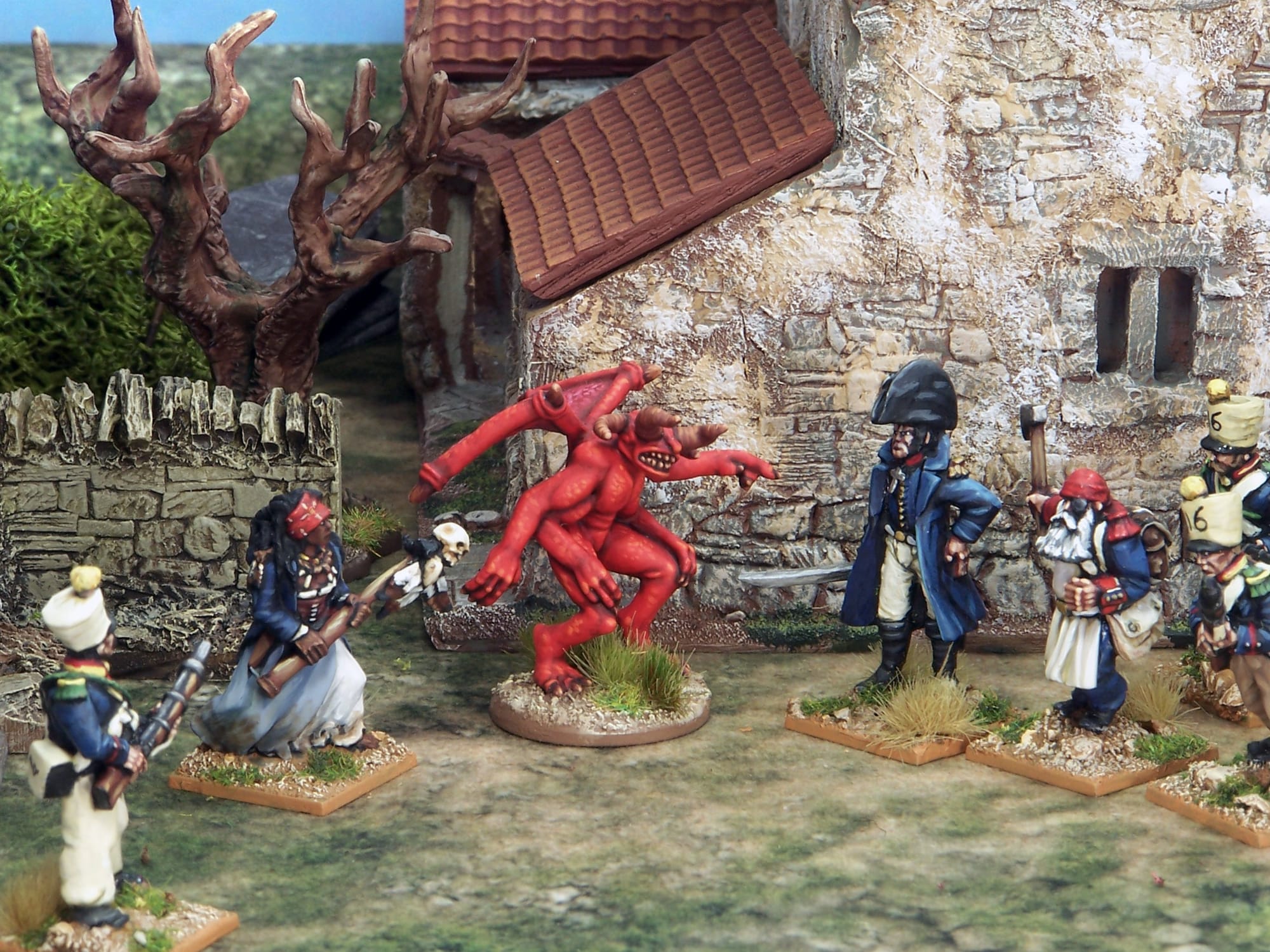
WS: Talking of blurring these two worlds together we love the miniatures that North Star have produced for the game , I never knew I needed tricorne hatted goblins in my life...
JM: I have been incredibly fortunate to have so many skilled people working to make my games more attractive and appealing. The artists, the designers, and of course the figure sculptors.
North Star has been a huge support to my games over the years, and they have really done it again with these miniatures. The goblins are amazing, and I suspect there are people who would love to just run a unit of them!
WS: Rather than just adapt the mechanics from your ‘grave games you created a new system for The Silver Bayonet, what was it you wanted this game to do, or not do, that you felt required that?
JM: First off, I wanted The Silver Bayonet to be slightly less chaotic and more predictable than my ‘Grave games. While many would probably still put it on the more ‘swingy’ side of gaming, the use of 2d10 as opposed to d20 does bring the bell curve into play.
Plus, the use of two dice allowed me to introduce a new system for manipulating those dice.
Since the figures in The Silver Bayonet don’t generally have ‘spells’ or ‘powers’ in the same way that my more fantastical games do, I knew I would need to introduce other mechanics to give players meaningful decisions to make throughout the game.
The use of those two different d10s allowed me to create the Fate Pool system, which makes players really think about when and how to use these bonus dice.
WS: Had you personally had much experience of playing, or designing, proper historical wargames before you worked on TSB?
JM: I’ve certainly played a few historical wargames in my time and worked with a load more when I was working in marketing for Osprey, so I felt like I had a pretty good grasp of the field.
That said, traditionally, most historical wargames are ‘big battle’ games and thus mechanically perhaps had less in common with what I tried to create than other fantasy/sci-fi skirmish games.
WS: It's fair to say that your games have been key in shifting wargaming back towards a more narrative experience and encouraging more skirmish sized games in recent years. What do you think of the state of the wargaming scene at the moment?
JM: I think wargaming is in the strongest position it has ever been in with a resurgent Games Workshop, the entry of Fantasy Flight/Atomic Mass, the rise of mid-level companies like Warlord, Mantic and Osprey Games, and more independents than ever before. This means you can find a game for almost any genre or style you want.
That said, I think we gamers also need to be careful. It is very easy to get overwhelmed by the huge amount of product that is being released and get caught in a cycle of always chasing the next shiny thing. It is important to really understand what drives your unique enjoyment in the hobby and make sure to focus your time and money on that.
For me that has always been narrative. I like to use games to create stories – so I paint miniatures and craft scenarios to help me tell those stories. The further I drift from that idea, the more dissatisfied I become with my hobby. I’ve bought too many large box sets, and too many armies, that I have never painted, and never will, because I got caught up in the moment. It’s okay to take it slow, and generally, the deeper you dive, the more enjoyment you will find.
We just all need to remember that ‘owning’ a bunch of miniatures or games doesn’t really do much for happiness. It is using those items in ways that are specifically fun to you that brings them value.
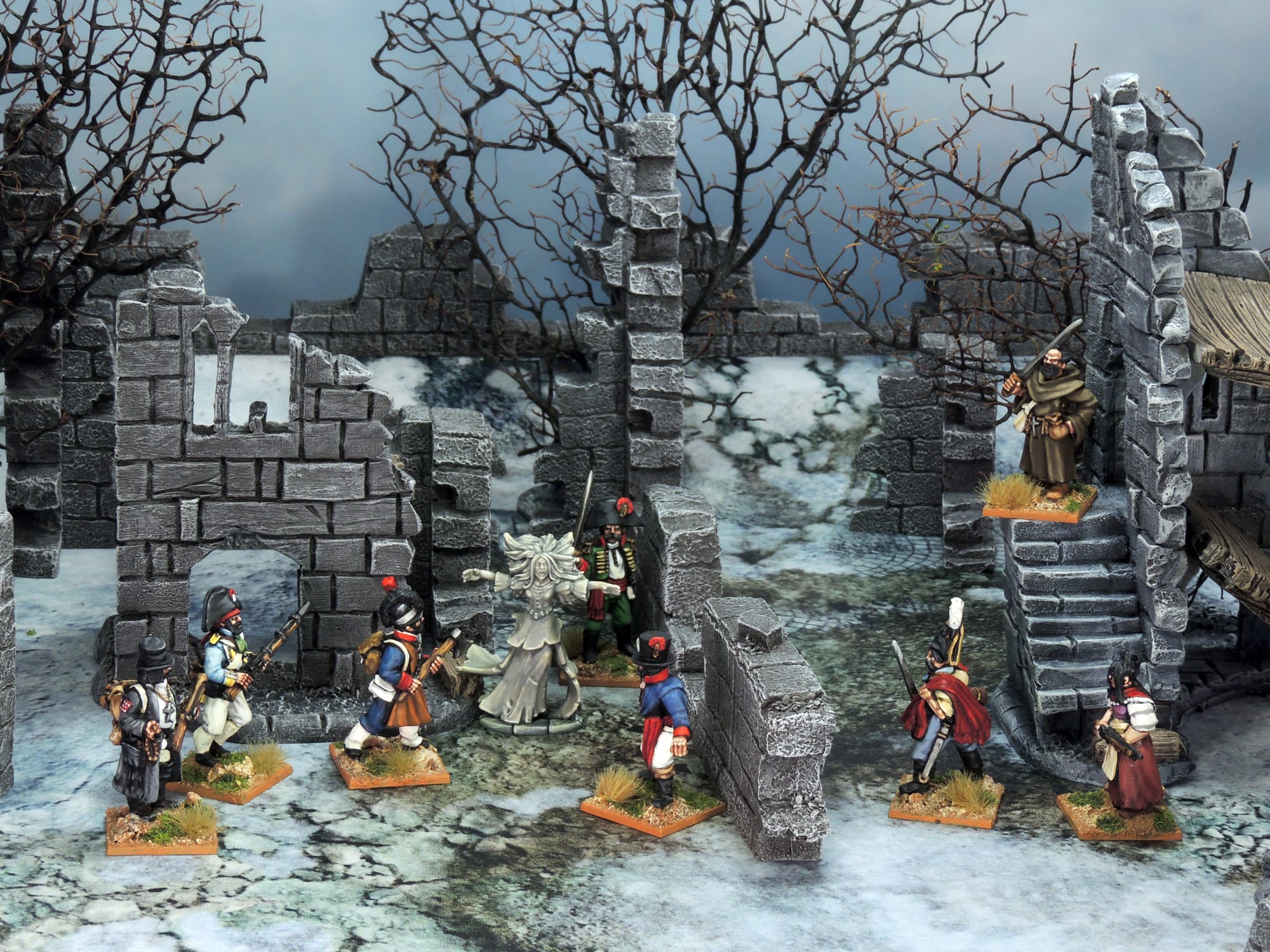
WS: Over the past couple of years we've seen a lot of roleplaying game designers either get back into wargames or dip their toes in for the first time, has there been anything from that kind of crossover between the two scenes that's caught your eye?
JM: In some ways, I’ve always seen RPGs and Wargames as more like two ends of a spectrum than two distinct hobbies, and I’ve always loved games, like Savage Worlds for example, that could be used in both ways.
I really enjoyed the recent Mech Warrior: Destiny which is the latest attempt to take the long-lived, pretty hardcore wargame, Battletech, and make it into an RPG. I think it did a good job taking it into role-playing, but keeping a lot of the elements that people love about Battletech.
WS: Whether it’s established wargame designers or those completely new to it, it feels like people are more willing to experiment at the moment. Where do you see things moving over the next year or so?
JM: I think there was a time, not too long ago, when wargaming had gone a bit stale and had fallen behind RPGs and board games in terms of mechanical elegance and experimentation, but I think it has been catching up over the last five or six years. What I’m really interested in seeing is how people can move away from the idea of ‘wargaming’ and more towards ‘miniature gaming’, by which I mean, how can we take the strengths of wargaming such as the ability to move figures around a completely open table with infinitely variable terrain, and use them to tell other types of dramatic stories.
While I love combat-action, I also love swashbuckling acrobatics, investigations, horror, exploration… how can miniatures games include more of these elements?
WS: With the move back to a more narrative style of wargaming we often talk about what we can adapt and pick up from RPGs, but what would you suggest RPG designers look at in the opposite direction for inspiration?
JM: For those RPGs where combat is still a big factor, I think it is definitely worth looking at modern wargames – as these are the games that have focused on how to make combat interesting.
Often the mechanics that work for other aspects of roleplaying can become a bit lifeless when it comes to fighting. It’s all about giving players important choices each turn and about limiting resources, but without getting too bogged down in details.
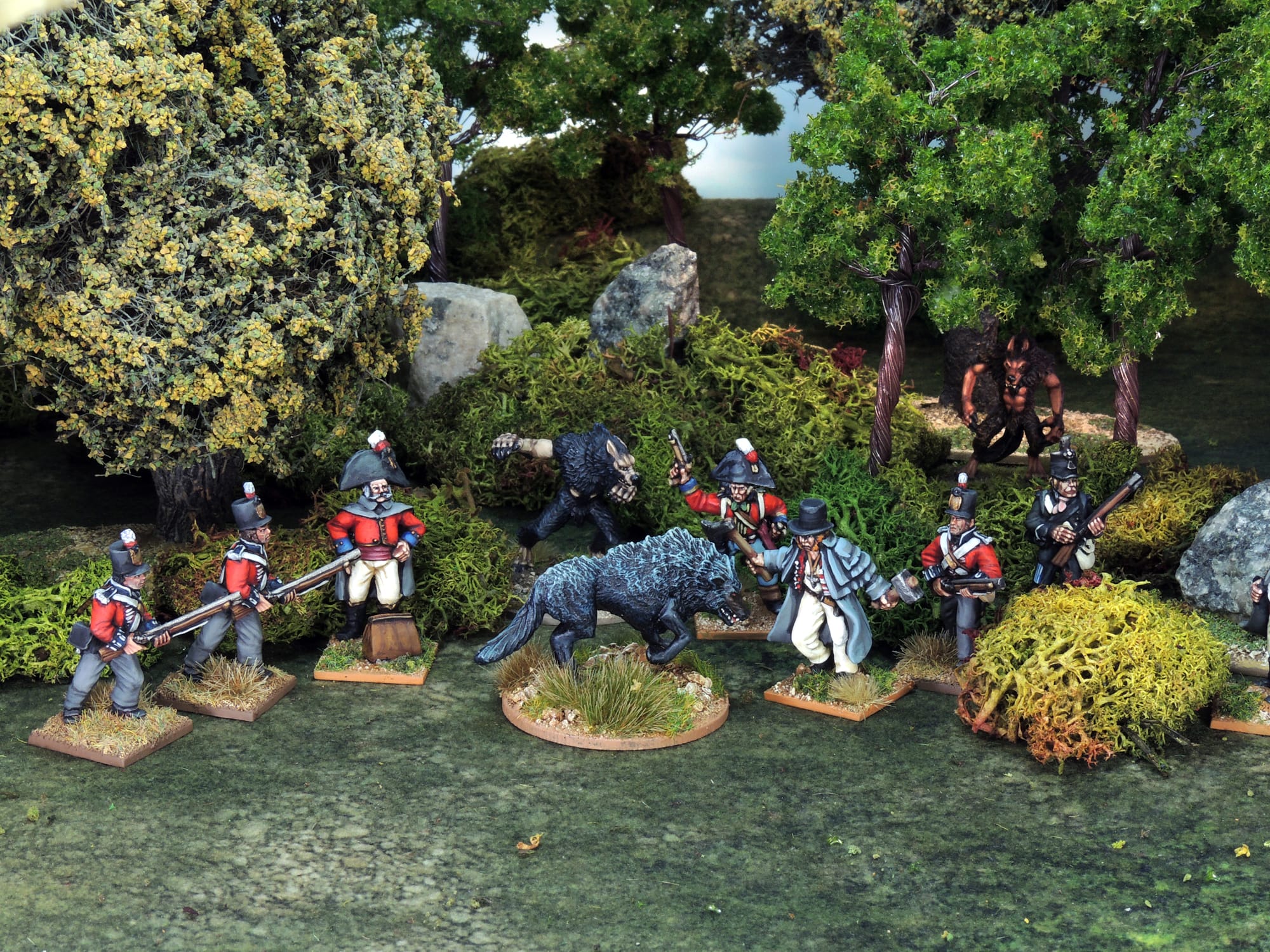
WS: The Silver Bayonet features a solid set of rules and scenarios for solo play, something we're seeing a lot more of in all kind of tabletop games these days, is that something you enjoy working on?
JM: It's been one of the major focuses of my efforts over the last three or four years. This is most obvious in my game Rangers of Shadow Deep which is designed to be played either solo or co-operatively. It takes me back to my earliest days of gaming, when I was a kid playing with toy soldiers in my room by myself.
It certainly comes with a unique set of challenges. Unlike writing scenarios for a competitive wargame, the idea of ‘balance’ means something completely different, and something less solid. Instead of ensuring that a scenario is ‘fair’, I am trying to ensure that the scenario is ‘fun’ with just the right level of challenge for the player.
But what is the ‘right level of challenge’? Not everyone is going to agree, and of course, if you like to include a heavy dose of randomness in scenarios, as I do, how can you maintain that ‘balance’. There are no hard answers here, but that is one of the reasons I let the narrative be my guide. Some scenarios should be more challenging than others, but as long as the story is interesting, it generally works out.
WS: As a concept, Napoleonic era warfare with supernatural elements is a fairly flexible and you provide plenty of advice on creating new monsters and scenarios, but are there any plans for more official expansions?
JM: Yes, there are. In fact I have already written one and there is another being worked on by someone else… I don’t know if I’m allowed to say any more than that at the moment!
WS: Finally, beyond The Silver Bayonet what’s next for you?
I’ve always got several projects on the go at once. I am nearly finished a book called Grave Mutations which is basically just a big d1000 mutation table that can be used for Frostgrave or with a little work with Ghost Archipelago, Rangers of Shadow Deep, and Stargrave. It’s really just a bit of fun to see if I could write 1,000 different mutations, and there are no specific rules for how to use it in any of those games, but I think players will get a real kick out of it. Its something I plan to self-publish. I’m also working on the next Rangers of Shadow Deep book, which is the final part to an adventure trilogy called The Rescue.
Finally, I’ve got more stuff coming for both Frostgrave and Stargrave. The next book out for Stargrave is called Hope Eternal and it is basically one giant solo or co-operative campaign, including prisoner rescues, train heists, battles against irradiated bugs and deadly sea creatures, and a final, desperate strike against two of the major pirate fleets that have been terrorizing the galaxy!
The Silver Bayonet is out now Available from Osprey Publishing
This feature originally appeared in Wyrd Science Vol.1, Issue 3 (Oct '22)

